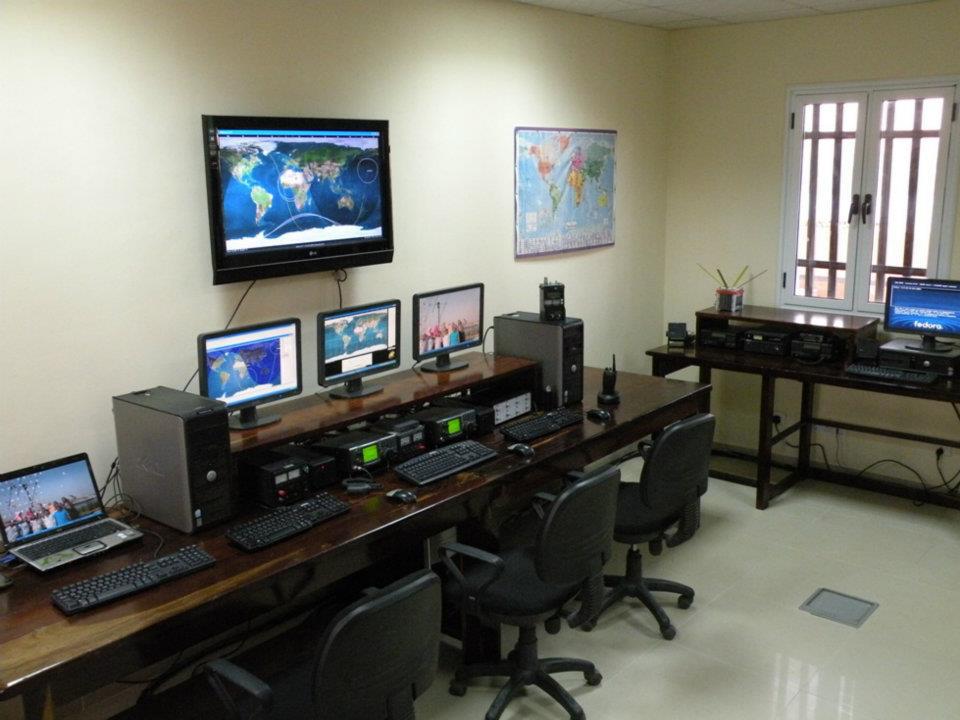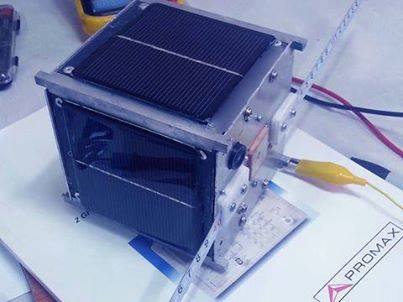National space activities in Sudan started in the 1970s, which culminated in the establishment of the National Remote Sensing Centre (NRSC) in 1977 by the Sudanese government within the jurisdiction of the National Council for Research, Ministry of Higher Education and Scientific Research.
In 1996, NRSC was restructured and renamed to Remote Sensing Authority (RSA) with a mandate to conduct research and development in the field of remote sensing, geoinformatics, and GPS technology applications for natural resources, environment, and disaster management.
RSA implements human capacity development programs such as education, training and awareness programs, in collaboration with academic institutions and professional associations. As the principal government authority on remote sensing and geoinformatics, RSA offers policy recommendations to the government and represents Sudan in space-related bodies and forums at local, regional and international levels.
Although remote sensing and geoinformatics activities are widespread across Sudan’s nascent space sector, the nation is witnessing a growing interest in astronomy and satellite development. Many universities in Sudan teach and research astronomical sciences at their faculties, with support from the Sudanese Society for Astronomy and Space science (SSASS), the nation’s foremost astronomy and space science association.
Educational Satellite Programmes in Sudan
Beyond remote sensing and astronomy, Sudan is also developing programmes and building capacity in satellite technology. In June 2013, the Sudanese government established the Institute of Space Research and Aerospace (ISRA) within the National Centre of Research, Ministry of Science and Communication, as part of a national plan towards the development and application of space technologies in several national socio-economic plans.
ISRA’s mandate is to “localise research and development of the different fields in space science and aerospace technology in Sudan.” The Institute’s research programme focuses on satellite design and aerospace engineering, space physics and astronomical sciences, aerial and space navigation, alternative energy in space sciences and laser, radar and remote sensing.

In March 2015, ISRA began to build a one-unit CubeSat project to create applied knowledge in small satellite design and development. The CubeSat produced the first ISRA CubeSat prototype, ISRASAT1, which was unveiled in May 2016. ISRA is currently developing the second phase of the CubeSat project, a satellite ground station, aerial surveillance systems, and a range of astronomical research facilities.
The academic community plays a significant role in Sudan’s evolving space and astronomy sector. Universities in Sudan such as Future University and the University of Khartoum offer programmes in space science and astronomy, including applied CubeSat programs which have seen students develop CubeSat prototypes and small satellite components.
Future University (formerly known as Computer Man College), which is the first specialised Information and communications technology university in Sudan, offers undergraduate and graduate programmes in space science and engineering, run by the Faculty of Telecommunications and Space Technology. The University hosts Sudan’s first Space Technology Centre, which was established in 2000. The Centre recently started a CubeSat project, following years of research and development in remote sensing and space physics.
The University of Khartoum(UofK)runs what is arguably Sudan’s most advanced satellite programme. The University’s satellite programme began in October 2010 with a CubeSat project at the Electrical and Electronics Department. In 2014, the University established a specialised Space Research Centre to coordinate all space-related activities across various departments of the University. So far, the University has designed and fabricated two CubeSat prototypes – KN-Sat1 and UOKSat-2 – and has successfully installed an operational ground station to track satellites and analyse geospatial data.

A group of engineers and scientists at the University of Khartoum are currently developing a third cube satellite named UOKSat-3 at the University’s Space Research Centre. UOKSat-3 is an upgraded version of UOKSat-2, following the confirmation of its engineering model (EM) and feedback from previous CubeSat projects. If everything turns out as planned, UOKSat-3 will be launched into space or be able to herald the actual launch of a Sudanese CubeSat.
Towards Launching A Government-funded Sudanese Satellite
The government of Sudan has long desired to launch a satellite into space. In 2005, precisely at the end of the devastating Second Sudan Civil War, the Sudanese government called on satellite manufacturers to bid for a USD 60 million satellite contract for the in-orbit delivery of the nation’s first satellite. The government planned to launch a satellite with the hope of having an eye in the sky to monitor its territories and provide satellite communication services across the country as a part of post-war rebuilding efforts. Although the government disclosed that it had received tenders from China and Europe, the deal in question did not see the light of the day.
Sudan’s ousted President, Omar Hassan al-Bashir, was vocal in calling for the establishment of the African Space Agency.
“I’m calling for the biggest project, an African space agency,” Bashir told a gathering of African Union Communications Ministers in Khartoum in September 2012.
The government has maintained an interest in owning a satellite and localising space technology in Sudan.
The government in 2016 rolled out an ambitious aerospace, aviation, and telecommunications project development portfolio, which includes a plan to launch a Sudanese communications satellite (SUDASAT-1) and a Sudanese remote sensing satellite (SRSS-1). According to the portfolio document released by the government, SUDASAT-1 will require a 3-year development timeframe, while SRSS-1 would require 28 months.
SRSS-1 is expected to “generate a comprehensive and topographic mapping of Sudan and its surrounding terrain for natural resources for developmental planning, exploration of natural resources, environmental monitoring, agricultural monitoring and yield estimation.”
While the document acknowledges that the contract for the development of SRSS-1 has been signed and is currently undergoing project financing processes, it did not disclose the contractor and value of the deal. However, in a separate document, the government mentioned that it was processing a loan facility from China’s Exim Bank to finance the satellite deal.
Private sector and Commercial Space activities in Sudan
Sudan’s publicly-traded telecommunications company, Sudatel Telecom Group, through its satellite communications-focused subsidiary, SudaSat, agreed on a deal with Arabsat to leverage the four Ka-band transponders onboard Arabsat 6A, to provide broadband communications and services across the Sudanese territory.
Built by Lockheed Martin, Arabsat 6A is part of the two-satellite Arabsat 6G programme being facilitated by Arabsat. The satellite is built on the modernised LM 2100 series. Arabsat 6A is one of the largest and most advanced commercial communication satellites ever built by Lockheed Martin, according to Lisa Callahan Vice, President and General Manager of Commercial Civil Space for Lockheed Martin.
The Arabsat 6A was successfully launched on April 11, 2019, aboard the SpaceX Falcon Heavy from Kennedy Space Centre. The Arabsat 6A satellite is at orbital position 30.5, where it will deliver television, radio, Internet, and mobile communications to customers in the Middle East, Africa, and Europe. Sudatel Telecom will host the satellite ground station service via the Abu Haraz satellite station in Sudan.
The Sudatel Telecom Group and Arabsat partnership will lay the foundation for Sudan’s fledgeling space ambitions.








